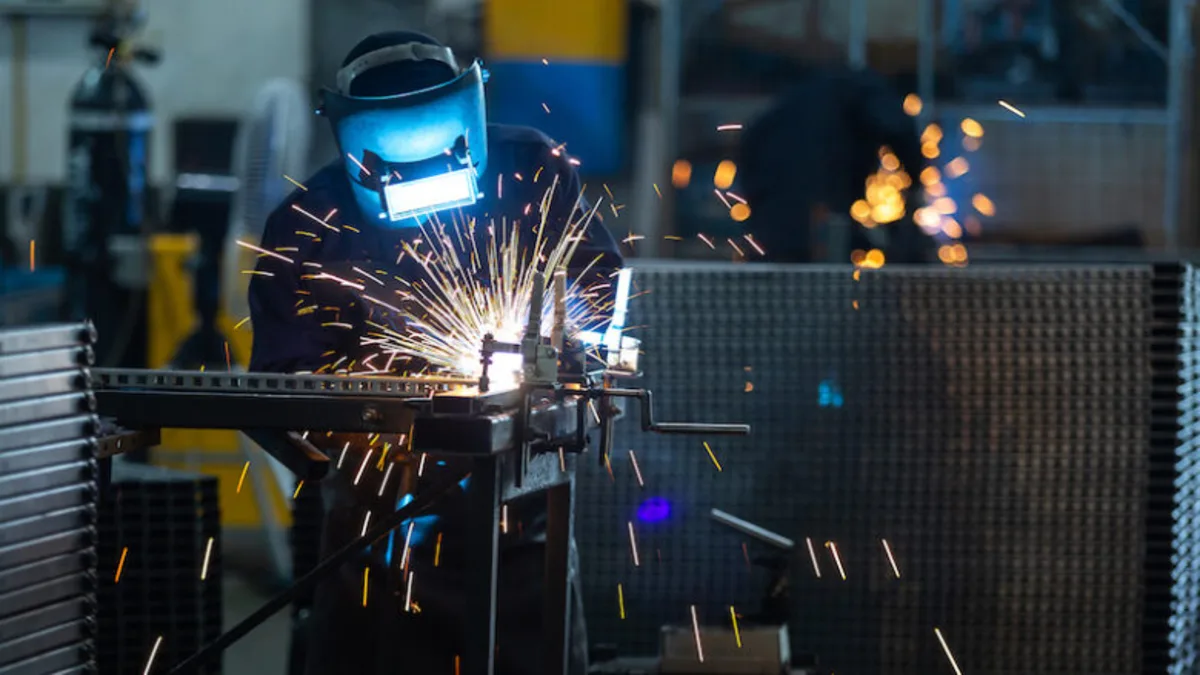Steel detailing jeemon vg is an essential aspect of any construction project, serving as the bridge between design and fabrication. At its core, steel detailing involves creating detailed drawings and plans for the fabrication and erection of steel structures. These detailed plans provide crucial information for fabricators and construction teams, ensuring precise assembly and installation of steel components.
In the world of construction, accuracy is paramount, and steel detailing plays a crucial role in achieving this precision. Every bolt, beam, and connection must be meticulously planned and documented to ensure structural integrity and safety. This is where experts like Jeemon VG shine, bringing their expertise and innovation to the field of steel detailing.
Fundamentals of Steel Detailing Jeemon Vg
Understanding the fundamentals of steel detailing jeemon vg is essential for anyone venturing into this field. Structural steel components, such as beams, columns, and trusses, form the backbone of buildings and infrastructure projects. Steel detailers must possess a deep understanding of these components and their behavior under various loads and conditions.
Moreover, proficiency in reading and interpreting structural drawings is a prerequisite for effective steel detailing. These drawings, often provided by structural engineers and architects, contain vital information such as dimensions, material specifications, and assembly details. Jeemon VG emphasizes the importance of attention to detail in this aspect, as even the slightest error can lead to costly mistakes during fabrication and construction.
Tools and Software for Steel Detailing
In the digital age, steel detailers have access to a wide range of tools and software to aid them in their work. Computer-Aided Design (CAD) software is a staple in the industry, allowing detailers to create precise 2D and 3D models of steel structures. These models not only facilitate visualization but also enable accurate material takeoffs and clash detection.
Furthermore, Building Information Modeling (BIM) has revolutionized the way steel detailing is approached. BIM software enables collaboration and coordination among various stakeholders in a construction project, including architects, engineers, contractors, and fabricators. Jeemon VG emphasizes the importance of staying updated with the latest tools and technologies in the field, as they can significantly enhance efficiency and accuracy in steel detailing projects.
The Steel Detailing Process
The steel detailing jeemon vg process typically begins with thorough preparation and planning. Detailers must familiarize themselves with project requirements, specifications, and deadlines before diving into the details. Site assessments and measurements are then conducted to gather accurate data for the detailing process.
Once the initial groundwork is laid, detailers proceed to draft and detail structural components according to the provided drawings and specifications. This involves creating detailed plans for each steel element, including dimensions, material specifications, and connection details. Attention to detail is paramount at this stage, as any inaccuracies or omissions can lead to errors during fabrication and construction.
Jeemon VG emphasizes the importance of communication and collaboration throughout the steel detailing process. Detailers must work closely with engineers, architects, fabricators, and contractors to ensure that the design intent is accurately captured and translated into actionable plans. Clear and effective communication helps streamline the workflow and minimize delays and errors.
Techniques for Efficient Steel Detailing
Efficiency is key in steel detailing, as projects often operate on tight schedules and budgets. Detailers must employ various techniques to optimize their workflow and maximize productivity without compromising quality. One such technique is the optimization of steel connections, where detailers strive to minimize the number of connections and simplify their design without compromising structural integrity.
Another important aspect of efficient steel detailing is the implementation of cost-effective design solutions. Detailers must constantly evaluate different design options and materials to find the most economical solution that meets project requirements. This may involve value engineering, where unnecessary elements are eliminated or simplified to reduce costs without sacrificing performance.
Additionally, minimizing material wastage is crucial for both economic and environmental reasons. Detailers must carefully plan the layout of steel components to minimize offcuts and scrap material during fabrication. This not only reduces material costs but also contributes to sustainability efforts by minimizing the environmental impact of construction projects.
Jeemon VG emphasizes the importance of continuous improvement in steel detailing practices. Detailers must stay abreast of industry developments and adopt new technologies and methodologies to enhance efficiency and quality. By embracing innovation and best practices, detailers can deliver superior results while meeting the demands of modern construction projects.
Quality Assurance in Steel Detailing
Quality assurance is a critical aspect of steel detailing jeemon vg, ensuring that fabricated components meet the required standards and specifications. Detailers must implement rigorous quality checks and reviews throughout the detailing process to identify and rectify any errors or discrepancies.
One of the primary objectives of quality assurance is to ensure compliance with industry standards and regulations. Detailers must be familiar with relevant codes and standards governing steel fabrication and construction, such as the American Institute of Steel Construction (AISC) standards. Adhering to these standards not only ensures structural integrity and safety but also facilitates regulatory approval and certification processes.
Collaboration with engineers and architects is essential for achieving quality assurance in steel detailing. Detailers must work closely with design professionals to clarify design intent, resolve conflicts, and address any discrepancies or ambiguities in the drawings. By fostering open communication and collaboration, detailers can ensure that the final detailed plans accurately reflect the design intent and meet the project requirements.
Furthermore, quality assurance extends beyond the detailing phase to encompass fabrication and construction. Detailers must collaborate with fabricators and contractors to ensure that the fabricated components are manufactured and installed according to the detailed plans. Regular site inspections and quality audits are conducted to verify compliance with the specifications and address any issues that may arise during construction.
Jeemon VG emphasizes the importance of attention to detail and thorough documentation in quality assurance processes. Detailers must meticulously review and verify every aspect of the detailed plans to ensure accuracy and completeness. Comprehensive documentation, including detailed drawings, specifications, and material lists, provides a reference for fabricators and construction teams, helping to avoid errors and minimize rework.
By implementing robust quality assurance practices, detailers can enhance the overall quality and integrity of steel detailing projects. This not only ensures the safety and performance of the structures but also enhances client satisfaction and confidence in the project deliverables.
Advanced Steel Detailing Practices
While the fundamentals of steel detailing lay the groundwork for successful projects, advanced practices and techniques can take detailing to the next level. Advanced steel detailing practices encompass a range of strategies and methodologies aimed at optimizing efficiency, enhancing quality, and addressing complex design challenges.
One such practice is the incorporation of custom fabrication techniques to meet unique project requirements. Detailers may develop customized solutions for specific structural elements or design constraints, leveraging their expertise and creativity to achieve innovative outcomes. This may involve the use of advanced fabrication technologies, such as computer numerical control (CNC) machining or laser cutting, to achieve precision and accuracy in fabrication.
Integrating sustainable practices in steel detailing is another advanced practice gaining traction in the industry. With increasing awareness of environmental issues and sustainability concerns, there is growing demand for green building solutions that minimize the environmental impact of construction projects. Detailers can play a crucial role in this endeavor by incorporating sustainable design principles into their detailing process, such as optimizing material usage, specifying recycled or eco-friendly materials, and designing for energy efficiency and lifecycle performance.
Addressing complex design challenges is a hallmark of advanced steel detailing practices. Detailers often encounter projects with unique geometries, structural configurations, or loading conditions that require creative solutions and innovative approaches. By leveraging their technical expertise and problem-solving skills, detailers can develop tailored solutions to overcome these challenges while ensuring structural integrity, functionality, and aesthetics.
Jeemon VG is a proponent of continuous learning and professional development in steel detailing. By staying abreast of emerging technologies, industry trends, and best practices, detailers can expand their skillset and capabilities, positioning themselves as trusted advisors and valuable resources for their clients. Advanced steel detailing practices not only enhance the efficiency and effectiveness of detailing projects but also contribute to the advancement and evolution of the industry as a whole.
Common Mistakes in Steel Detailing
While steel detailing jeemon vg requires precision and attention to detail, it is not uncommon for errors and mistakes to occur during the detailing process. Identifying and avoiding these common mistakes is essential for ensuring the accuracy and integrity of detailing projects.
One of the most common mistakes in steel detailing is inaccurate measurements or dimensions. Detailers must meticulously measure and verify dimensions to ensure that they accurately reflect the design intent and project requirements. Failure to do so can result in misaligned or improperly sized components, leading to costly rework and delays.
Another common mistake is overlooking or misinterpreting design intent or specifications. Detailers must thoroughly review and understand the provided drawings and specifications to ensure that they accurately capture the design requirements. Misinterpreting design intent can result in errors in detailing, such as incorrect connections or insufficient clearances, compromising the structural integrity and functionality of the final structure.
Inadequate coordination and communication among stakeholders can also lead to mistakes in steel detailing. Detailers must collaborate closely with engineers, architects, fabricators, and contractors to clarify design requirements, resolve conflicts, and address any issues that may arise during the detailing process. Clear and effective communication helps ensure that everyone is on the same page and that the final detailed plans accurately reflect the design intent.
Jeemon VG emphasizes the importance of quality assurance and quality control processes in mitigating common mistakes in steel detailing. Detailers must implement rigorous checks and reviews throughout the detailing process to identify and rectify any errors or discrepancies before they escalate into costly issues during fabrication or construction. By proactively addressing potential mistakes and implementing best practices, detailers can enhance the accuracy and reliability of their detailing projects, ensuring successful outcomes for their clients.
Project Management in Steel Detailing
Effective project management is essential for ensuring the successful execution of steel detailing jeemon vg projects. Detailers must carefully plan, coordinate, and monitor all aspects of the project to ensure that it is completed on time, within budget, and to the required quality standards.
The first step in project management is establishing clear timelines and milestones for the project. Detailers must work closely with clients, engineers, architects, and other stakeholders to develop realistic project schedules that account for all phases of the detailing process, from initial planning and design to fabrication and construction.
Resource allocation and management are also critical aspects of project management in steel detailing. Detailers must ensure that they have the necessary resources, including personnel, software, and equipment, to execute the project effectively and efficiently. This may involve coordinating with internal teams or external contractors to supplement their workforce or expertise as needed.
Communication is key to successful project management in steel detailing. Detailers must maintain open and transparent communication with clients and stakeholders throughout the project, providing regular updates on progress, addressing any concerns or issues that arise, and soliciting feedback to ensure that the project meets the client’s expectations.
Risk management is another important aspect of project management in steel detailing. Detailers must identify potential risks and uncertainties that could impact the project’s success, such as material shortages, design changes, or unforeseen site conditions, and develop strategies to mitigate or address these risks proactively. This may involve developing contingency plans, adjusting project schedules or budgets, or seeking input from subject matter experts to resolve complex issues.
Jeemon VG emphasizes the importance of adaptability and flexibility in project management. Detailers must be prepared to adjust their plans and strategies as needed to accommodate changes or unexpected developments, ensuring that the project stays on track and delivers the desired outcomes for the client. By effectively managing resources, communication, and risks, detailers can enhance the overall efficiency and success of their steel detailing projects, earning the trust and satisfaction of their clients.
Career Opportunities in Steel Detailing
Steel detailing offers a diverse range of career opportunities for individuals with the right skills, training, and passion for construction and design. Whether you’re a recent graduate looking to start your career or an experienced professional seeking new challenges, there are numerous paths you can pursue in the field of steel detailing.
One common entry point into the field is as a junior steel detailer or drafter. Junior detailers typically work under the guidance of more experienced professionals, assisting with drafting and detailing tasks, performing measurements and calculations, and learning the ropes of the industry. This role provides valuable hands-on experience and exposure to the various aspects of steel detailing, laying the foundation for career growth and advancement.
With experience and expertise, steel detailers can progress to more senior roles, such as senior detailer or lead detailer. Senior detailers take on greater responsibility for project management, client coordination, and quality control, overseeing the detailing process from start to finish and ensuring that projects are completed to the highest standards. They may also mentor and train junior detailers, sharing their knowledge and expertise to help them develop their skills and advance their careers.
Another career path in steel detailing jeemon vg is specialization in a particular area or niche within the industry. For example, detailers may specialize in specific types of structures, such as commercial buildings, industrial facilities, or bridges, or focus on specific aspects of detailing, such as connections, fabrication, or BIM coordination. Specialization allows detailers to hone their skills and expertise in a particular area of interest, becoming subject matter experts and sought-after professionals in their field.
In addition to traditional employment opportunities, many steel detailers also choose to work as independent contractors or freelancers, offering their services to clients on a project-by-project basis. This allows detailers to have greater flexibility and autonomy in their work, choosing projects that align with their interests and schedule and potentially earning higher compensation for their expertise. However, freelancing also comes with its own set of challenges, including managing client relationships, marketing your services, and handling administrative tasks such as billing and invoicing.
Jeemon VG encourages aspiring steel detailers to pursue education and training in relevant fields such as engineering, architecture, or drafting, as well as seek opportunities for hands-on experience and professional development. Joining industry associations and networking with peers can also help aspiring detailers connect with potential employers and mentors, gain insights into industry trends and best practices, and access resources and training opportunities to further their careers.
Overall, steel detailing offers a rewarding and fulfilling career path for individuals with a passion for design, construction, and problem-solving. Whether you’re just starting out or looking to take your career to the next level, there are ample opportunities to grow and succeed in this dynamic and evolving field.
Innovations and Future Trends in Steel Detailing
As technology continues to advance and evolve, so too does the field of steel detailing. From emerging software tools and digital workflows to innovative fabrication techniques and sustainable design practices, there are numerous innovations and trends shaping the future of steel detailing.
One of the most significant developments in recent years is the adoption of Building Information Modeling (BIM) in steel detailing. BIM software allows detailers to create detailed 3D models of steel structures, providing a virtual representation of the building that can be used for visualization, coordination, and analysis. BIM enables greater collaboration and coordination among project stakeholders, facilitating better decision-making and reducing errors and conflicts during the detailing process.
Another emerging trend in steel detailing is the use of advanced fabrication technologies, such as robotic welding and additive manufacturing. These technologies offer new possibilities for creating complex geometries and intricate designs, as well as improving efficiency and precision in fabrication. Detailers can leverage these technologies to push the boundaries of design and fabrication, creating structures that were previously unfeasible or prohibitively expensive to build.
Sustainability is also a driving force in the future of steel detailing, with growing emphasis on designing buildings and structures that minimize environmental impact and maximize energy efficiency. Detailers are increasingly incorporating sustainable design principles into their projects, such as optimizing material usage, specifying recycled or eco-friendly materials, and designing for energy efficiency and lifecycle performance. By embracing sustainable practices, detailers can not only reduce the environmental footprint of construction projects but also enhance their long-term durability and resilience.
Looking ahead, digitalization and automation are expected to play a significant role in shaping the future of steel detailing. From AI-powered design optimization algorithms to automated fabrication processes, there is vast potential for technology to streamline and accelerate the detailing process, improving efficiency and reducing costs. Detailers must embrace these technological advancements and adapt their workflows and practices to harness the full potential of digitalization and automation.
Jeemon VG encourages detailers to stay abreast of emerging technologies and industry trends, as well as invest in continuous learning and professional development to remain competitive in the evolving landscape of steel detailing. By embracing innovation and adopting best practices, detailers can position themselves as leaders in the field and drive positive change in the industry.
Case Studies in Steel Detailing Excellence
While steel detailing jeemon vg is a complex and challenging field, there are numerous examples of projects that demonstrate excellence in detailing and design. From iconic skyscrapers and bridges to industrial facilities and cultural landmarks, these case studies showcase the ingenuity, creativity, and technical expertise of detailers and design professionals.
One such example is the Burj Khalifa in Dubai, United Arab Emirates, the tallest building in the world. The Burj Khalifa’s sleek and elegant design is made possible by meticulous steel detailing, which ensured precise fabrication and assembly of its structural components. Detailers collaborated closely with engineers and architects to develop innovative solutions for the building’s unique geometry and loading conditions, pushing the boundaries of what was possible in steel construction.
Another notable case study is the Millau Viaduct in France, the tallest bridge in the world. The viaduct’s graceful and slender design required sophisticated steel detailing to achieve its complex curvature and spanning capabilities. Detailers utilized advanced software tools and fabrication techniques to create detailed plans for the viaduct’s steel components, ensuring precision and accuracy in fabrication and construction. The result is a stunning architectural marvel that showcases the artistry and craftsmanship of steel detailing.
Closer to home, the One World Trade Center in New York City is another example of excellence in steel detailing. The tower’s iconic design and resilience in the face of adversity are a testament to the meticulous planning and detailing that went into its construction. Detailers worked tirelessly to ensure that every steel beam, column, and connection met the highest standards of quality and safety, honoring the memory of the original World Trade Center while embodying the spirit of resilience and renewal.
These case studies illustrate the importance of collaboration, innovation, and attention to detail in achieving excellence in steel detailing. By pushing the boundaries of design and construction, detailers can create structures that inspire awe and admiration while standing the test of time. Jeemon VG encourages detailers to study these examples of excellence and draw inspiration from them in their own work, striving for perfection in every project they undertake.
Collaborative Approaches in Steel Detailing
In today’s complex construction projects, collaboration is key to success. Steel detailing is no exception, with multiple stakeholders involved in the design, fabrication, and construction of steel structures. By adopting collaborative approaches and leveraging the expertise of all parties involved, detailers can streamline the detailing process, reduce errors and conflicts, and deliver superior outcomes for their clients.
One of the key benefits of collaboration in steel detailing jeemon vg is improved coordination and communication among project stakeholders. Detailers must work closely with engineers, architects, fabricators, and contractors to ensure that the detailed plans accurately reflect the design intent and meet the project requirements. Regular meetings, site visits, and virtual collaboration tools facilitate communication and coordination, allowing stakeholders to address issues and resolve conflicts in real-time.
Integrated Project Delivery (IPD) is an approach that promotes collaboration and teamwork among project stakeholders from the outset. In an IPD arrangement, all parties, including the owner, architect, engineer, contractor, and detailer, work together as a cohesive team to develop and execute the project. This collaborative approach fosters trust, transparency, and shared accountability, leading to better outcomes for all parties involved.
Digital collaboration tools, such as BIM software and cloud-based project management platforms, are essential for facilitating collaboration in steel detailing projects. These tools enable real-time sharing of information, collaboration on 3D models, and coordination of design changes, ensuring that all stakeholders are working from the same set of data and information. By embracing digital collaboration, detailers can streamline workflows, reduce errors and conflicts, and improve overall project efficiency.
Jeemon VG emphasizes the importance of a collaborative mindset in steel detailing. Detailers must approach projects with an open and cooperative attitude, seeking input and feedback from other stakeholders and actively participating in decision-making processes. By fostering a culture of collaboration and teamwork, detailers can enhance the success of their projects and build strong, lasting relationships with clients and partners.
International Standards and Regulations in Steel Detailing
Steel detailing jeemon vg is governed by a range of international standards and regulations that ensure the safety, quality, and integrity of steel structures. From design codes and material specifications to fabrication and construction standards, these regulations provide a framework for detailers to follow and adhere to in their work.
One of the most widely recognized standards in steel detailing is the American Institute of Steel Construction (AISC) standards. These standards cover a range of topics related to steel design, fabrication, and construction, providing guidelines and best practices for detailers to follow. Detailers must be familiar with the AISC standards and ensure that their detailed plans comply with the requirements set forth in these standards.
In addition to national standards, there are also international standards and codes that detailers must consider when working on projects outside their home country. For example, the Eurocodes are a set of European standards that govern the design of steel structures in European Union member states. Detailers working on international projects must ensure that their detailed plans comply with the relevant Eurocodes and other applicable regulations.
In addition to design codes and standards, detailers must also consider regulatory requirements related to fabrication and construction. These may include building codes, zoning regulations, environmental regulations, and occupational health and safety standards. Detailers must work closely with engineers, architects, and other stakeholders to ensure that their detailed plans comply with all applicable regulations and requirements.
Jeemon VG emphasizes the importance of staying up-to-date with changes and updates to international standards and regulations in steel detailing. Detailers must actively monitor changes to codes and standards, attend training sessions and seminars, and engage with industry organizations to ensure that their knowledge and skills remain current. By staying informed and compliant with international standards and regulations, detailers can deliver projects that meet the highest standards of safety, quality, and performance.
The Role of Sustainability in Steel Detailing
Sustainability is an increasingly important consideration in the design and construction of buildings and infrastructure projects. As the environmental impacts of construction become more apparent, there is growing demand for sustainable building solutions that minimize resource consumption, reduce carbon emissions, and enhance the resilience and durability of structures. steel detailing jeemon vg plays a crucial role in advancing sustainability in construction, from optimizing material usage to incorporating renewable energy systems and green building technologies.
One of the key ways that detailers can promote sustainability in steel detailing is by optimizing material usage. Steel is one of the most sustainable building materials available, with high recycled content and recyclability at the end of its life cycle. Detailers can minimize material waste by carefully planning the layout of steel components to maximize efficiency and reduce offcuts and scrap material during fabrication. Additionally, detailers can specify recycled or eco-friendly materials for steel components, such as steel made from scrap or sustainably sourced timber for formwork and shoring.
Another important aspect of sustainability in steel detailing is designing for energy efficiency and lifecycle performance. Detailers can incorporate passive design strategies, such as optimizing building orientation and envelope design to maximize natural daylighting and ventilation, reducing the need for artificial lighting and mechanical HVAC systems. Additionally, detailers can specify energy-efficient building systems and materials, such as high-performance insulation, low-emissivity glazing, and energy-efficient lighting and appliances, to minimize energy consumption and operational costs over the life of the building.
Furthermore, detailers can promote sustainability in steel detailing by integrating renewable energy systems and green building technologies into their projects. This may include incorporating solar panels or wind turbines to generate onsite renewable energy, designing rainwater harvesting systems to reduce water consumption, or specifying green roofs and permeable paving to enhance stormwater management and reduce urban heat island effects. By integrating these sustainable features into their projects, detailers can help minimize environmental impact, enhance occupant comfort and well-being, and contribute to the long-term sustainability of the built environment.
Jeemon VG encourages detailers to embrace sustainability as a core principle in their work and to seek out opportunities to incorporate sustainable design practices into their projects. By prioritizing sustainability in steel detailing, detailers can not only reduce the environmental footprint of construction projects but also create healthier, more resilient, and more livable buildings and communities for future generations.
Enhancing Safety in Steel Detailing
Safety is paramount in steel detailing, with rigorous protocols and procedures in place to ensure the health and well-being of workers and the public. Detailers must be vigilant in identifying safety hazards and implementing measures to mitigate risks throughout the detailing process, from initial site assessment to fabrication and construction.
One of the most critical aspects of safety in steel detailing jeemon vg is identifying and addressing potential hazards during the initial site assessment phase. Detailers must conduct thorough site inspections to identify any safety risks, such as uneven terrain, hazardous materials, or overhead obstructions, and take appropriate measures to mitigate these risks. This may involve implementing safety barriers, providing personal protective equipment (PPE), or establishing exclusion zones to prevent unauthorized access to hazardous areas.
Another key aspect of safety in steel detailing is ensuring that detailed plans and specifications comply with relevant safety regulations and standards. Detailers must be familiar with occupational health and safety regulations, such as OSHA (Occupational Safety and Health Administration) standards in the United States or similar regulations in other countries, and ensure that their detailed plans incorporate appropriate safety measures and precautions. This may include specifying safe working loads for structural components, providing fall protection systems for workers, or designing temporary support structures to prevent collapses during construction.
Additionally, detailers must communicate effectively with fabricators, contractors, and other stakeholders to ensure that safety protocols are followed during fabrication and construction. This may involve providing detailed instructions and guidelines for safe assembly and installation of steel components, conducting safety training sessions for workers, or coordinating with onsite safety personnel to address any safety concerns or issues that arise during construction.
Jeemon VG emphasizes the importance of a proactive approach to safety in steel detailing. Detailers must prioritize safety at every stage of the detailing process, from initial planning and design to fabrication and construction, and actively seek out opportunities to identify and mitigate potential hazards. By fostering a culture of safety and vigilance, detailers can ensure that their projects are completed safely and successfully, with minimal risk to workers and the public.
Economic Considerations in Steel Detailing
In addition to safety and sustainability considerations, economic factors play a significant role in steel detailing, with cost considerations influencing decision-making at every stage of the detailing process. Detailers must carefully balance project requirements, budget constraints, and client expectations to deliver cost-effective solutions that meet the project’s needs without compromising quality or safety.
One of the primary economic considerations in steel detailing jeemon vg is cost analysis and budgeting for projects. Detailers must carefully assess project requirements, including material quantities, labor costs, and overhead expenses, and develop detailed cost estimates and budgets to ensure that the project remains financially viable. This may involve conducting cost-benefit analyses, value engineering exercises, or feasibility studies to identify cost-saving opportunities and optimize project economics.
Strategies for cost reduction without compromising quality are essential in steel detailing, particularly in today’s competitive market. Detailers must constantly evaluate different design options, materials, and construction methods to identify opportunities for cost savings while maintaining structural integrity and performance. This may involve specifying alternative materials or construction techniques, optimizing structural configurations to minimize material usage, or negotiating with suppliers and subcontractors to secure favorable pricing.
Furthermore, detailers must consider the economic benefits of efficient detailing practices, such as minimizing material wastage and optimizing labor productivity. By optimizing material usage and reducing scrap material during fabrication, detailers can reduce material costs and minimize waste disposal expenses, contributing to overall project cost savings. Additionally, by streamlining workflows and optimizing resource allocation, detailers can improve project efficiency and productivity, reducing labor costs and project timelines, and enhancing the project’s economic viability.
Jeemon VG encourages detailers to take a proactive approach to economic considerations in steel detailing, seeking out opportunities to optimize project economics and deliver maximum value to clients. By balancing cost considerations with quality, safety, and sustainability objectives, detailers can ensure that their projects are not only economically viable but also successful and profitable in the long term.
Client Relations and Customer Satisfaction
Building strong client relationships and ensuring customer satisfaction are essential aspects of success in steel detailing. Detailers must strive to understand their clients’ needs and expectations, communicate effectively throughout the project, and deliver high-quality results that meet or exceed the client’s requirements.
One of the key elements of successful client relations in steel detailing is effective communication. Detailers must establish clear lines of communication with their clients from the outset, ensuring that they understand the project requirements, timelines, and budget constraints. Regular updates and progress reports keep clients informed and engaged throughout the project, providing opportunities to address any concerns or issues that may arise and ensuring that the project stays on track.
Understanding the client’s needs and expectations is essential for delivering a successful project. Detailers must take the time to listen to their clients, ask probing questions, and clarify any ambiguities or uncertainties to ensure that they fully understand the client’s vision and objectives for the project. By taking a proactive approach to client engagement, detailers can anticipate their clients’ needs and preferences and tailor their solutions accordingly, enhancing overall client satisfaction.
Strategies for ensuring customer satisfaction in steel detailing include delivering high-quality work that meets or exceeds the client’s expectations, providing exceptional customer service and support throughout the project, and addressing any issues or concerns promptly and effectively. Detailers must be responsive to client feedback and willing to make adjustments or revisions as needed to ensure that the final deliverables meet the client’s requirements and specifications.
Jeemon VG emphasizes the importance of building trust and credibility with clients through transparency, integrity, and professionalism. Detailers must demonstrate their expertise and reliability through their work and their interactions with clients, earning their trust and confidence in their ability to deliver successful outcomes. By prioritizing client relations and customer satisfaction, detailers can build strong, lasting relationships with their clients and position themselves for long-term success and growth in the industry.
Conclusion
Steel detailing jeemon vg is a complex and multifaceted discipline that plays a critical role in the design and construction of steel structures. From initial planning and design to fabrication and construction, detailers are responsible for creating detailed plans and specifications that ensure the structural integrity, safety, and functionality of buildings and infrastructure projects.
By embracing innovation, collaboration, and best practices, detailers can enhance the efficiency, accuracy, and quality of their detailing projects, delivering superior outcomes for their clients. From leveraging advanced software tools and fabrication technologies to integrating sustainable design principles and promoting safety and economic considerations, detailers must consider a wide range of factors to achieve success in steel detailing.
Jeemon VG is a renowned expert in the field of steel detailing, with a proven track record of delivering exceptional results for clients around the world. His dedication to excellence, attention to detail, and commitment to customer satisfaction set him apart as a leader in the industry, inspiring others to strive for greatness in their own work.
As the field of steel detailing continues to evolve and expand, detailers must stay abreast of emerging technologies, industry trends, and best practices to remain competitive and successful. By embracing innovation, collaboration, and continuous learning, detailers can position themselves as leaders and innovators in the field, driving positive change and shaping the future of steel detailing for generations to come.
FAQs
1. What is steel detailing, and why is it important in construction?
Steel detailing involves creating detailed drawings and plans for the fabrication and erection of steel structures. It is essential in construction because it ensures the accuracy, precision, and safety of steel components, facilitating efficient fabrication and construction processes.
2. What tools and software are used in steel detailing?
Steel detailers use a variety of tools and software, including CAD (Computer-Aided Design) software, BIM (Building Information Modeling) software, and advanced fabrication technologies such as CNC machining and robotic welding.
3. What are some common mistakes in steel detailing, and how can they be avoided?
Common mistakes in steel detailing include inaccurate measurements, misinterpretation of design intent, and inadequate coordination among stakeholders. These can be avoided through thorough planning, attention to detail, and effective communication and collaboration.
4. What career opportunities are available in steel detailing?
Steel detailing offers a range of career opportunities, including junior detailer, senior detailer, and specialization in areas such as connections, fabrication, or BIM coordination. Freelancing and entrepreneurship are also options for experienced detailers.
5. How can steel detailing contribute to sustainability in construction?
Steel detailing can contribute to sustainability in construction by optimizing material usage, designing for energy efficiency, and integrating renewable energy systems and green building technologies into projects.
6. What are some best practices for enhancing safety in steel detailing?
Best practices for enhancing safety in steel detailing include conducting thorough site assessments, complying with safety regulations and standards, and communicating effectively with stakeholders to ensure that safety protocols are followed throughout the detailing process.
7. How can detailers build strong client relationships and ensure customer satisfaction?
Detailers can build strong client relationships and ensure customer satisfaction by communicating effectively, understanding the client’s needs and expectations, and delivering high-quality work that meets or exceeds the client’s requirements.
8. What are some emerging trends and innovations in steel detailing?
Emerging trends and innovations in steel detailing include the adoption of BIM technology, advanced fabrication technologies such as robotic welding and additive manufacturing, and the integration of sustainable design principles into detailing practices.
9. What international standards and regulations govern steel detailing?
Steel detailing is governed by a range of international standards and regulations, including the American Institute of Steel Construction (AISC) standards and Eurocodes in Europe. Detailers must ensure that their detailed plans comply with these standards and regulations to ensure the safety and quality of steel structures.
10. How can detailers stay competitive and successful in the field of steel detailing?
Detailers can stay competitive and successful in the field of steel detailing by embracing innovation, collaboration, and continuous learning, staying abreast of emerging technologies and industry trends, and delivering exceptional results for their clients through dedication, professionalism, and attention to detail.










